After three matchdays in the Belgian Pro League, KAA Gent were early to sack their manager Jess Thorup. This came as a surprise due to his good results leading to Champions League play-offs last season. This meant that a manager which had proven himself in the Belgian league was free to snatch up. Not much later Genk decided to part ways with Hannes Wolf. This resulted in hiring Genk signing Thorup as their head coach.
With this in mind, matchday seven in the Belgian Pro League promised to be an interesting one. Genk would take on Oostende. Oostende have had a rather steady start to the season under the management of former youth coach in the Bundesliga at RB Leipzig Alexandre Blessin.
The match finished in a 2-2 draw under interesting tactical circumstances. This tactical analysis will break the match down into various game moments to provide analysis and insights into the tactics utilised by the two sides.
Lineups and formations
In his first game ar Genk, Thorup decided to step away of his favoured four-diamond-two formation, which he often used when he was at Gent. This time he opted for a 4-2-3-1. Maarten Vandervoordt started in goal and the defence consisted of Jere Uronen, Lucumí Carlos, Cuesta Figueroa and Joakim Mæhle. The central midfield was occupied by Patrik Hrošovský, Bastien Toma and Kristian Thorstvedt. Whilst the offensive flanks consisted of Junya Ito and Luca Oyen. Ebere Onuachu led the line for Genk.

The away side Oostende started in a 4-3-1-2 formation. In goal was Guillaume Hubert, with defender Jelle Bataille at left-back and Théo Ndicka Matam at right-back. Between them, Arthur Theate and Anton Tanghe were the centre-back partnership. The three-man midfield consisted of the experienced Kevin Vandendriessche, Andrew Hjulsager and Maxime D’Arpino, who was in the holding role. In front of them, in the No. 10 position was Cameron McGeehan. Makhtar Gueye and Fashion Sakala led the line.
Oostende’s pressing system exploited
As Blessin has worked as a youth coach in one of the clubs most famous of their high pressing intensity, the German coach also applies this high pressing intensity at Oostende. Their overall PPDA rate during this game was at an impressive 5,3. This means Blessin’s men were constantly chasing down the ball once they lost it and more importantly not allowing Genk to play out of the back. Oostende’s pressing system did get exposed often, this allowed Genk progress through the thirds from the back. Some positional mistakes were the reason for this happening.
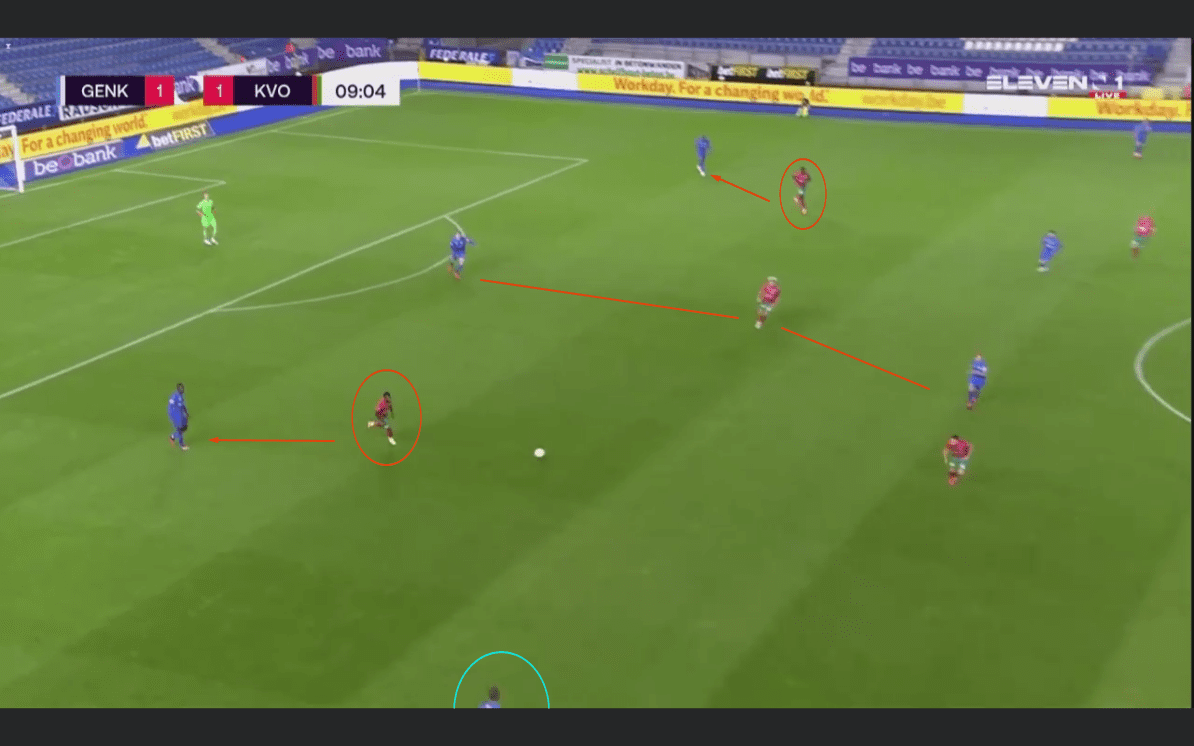
In the above image, we can see how Oostende try to press the home side high upfield. The two strikers mark the two centre-backs, whilst McGeehan tries to follow the pivot. This system has similarities to Jürgen Klopp’s Liverpool pressing approach. The difference is that the full-backs are left in a lot of space behind Oostende’s first line of press due to the man orientations centrally and narrow position of the strikers. The second line of press was also man-oriented which meant when the Genk midfielders kept their mutual distances short enough centrally, Oostende’s second line became stretched out.
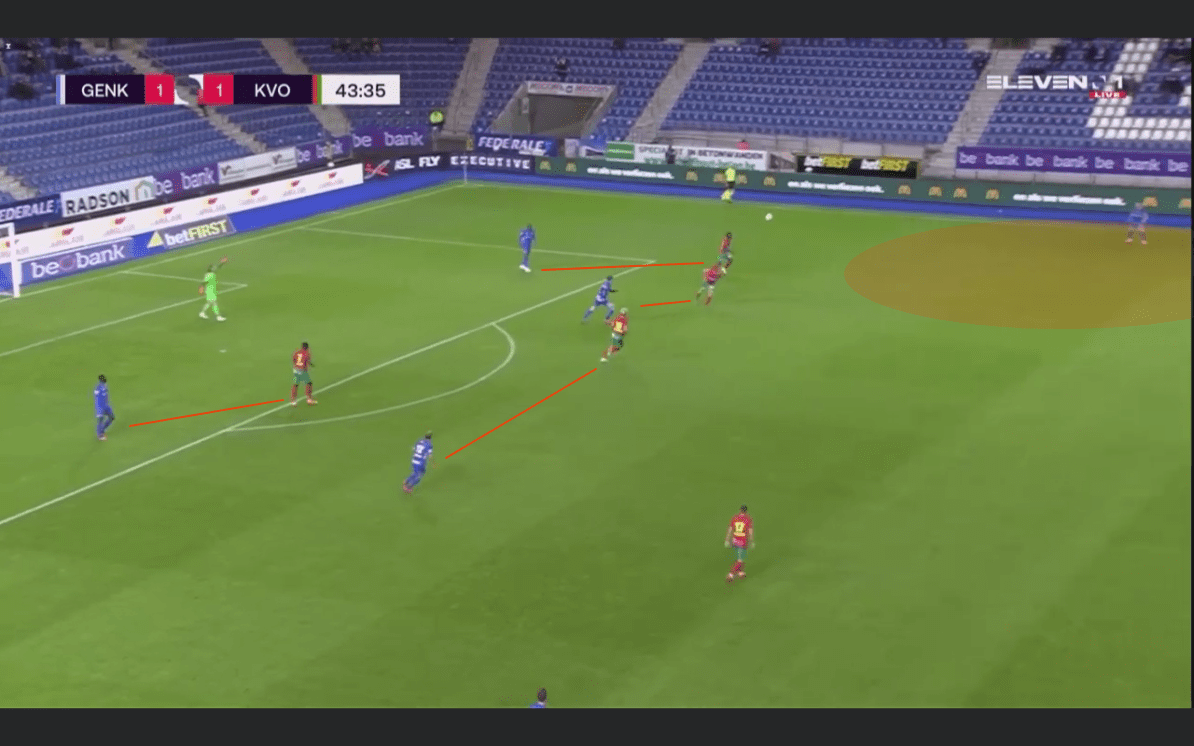
Above is a good example of that. McGeehan and Vandendriesche are sucked into pressing the double pivots whilst the two strikers mark the centre-backs. This not only created space for the full-back but also space between the midfield and defensive line for Genk to exploit.
Genk’s overloads
Above, we discussed Oostende’s high pressing approach in a 4-3-1-2 system. Due to this being heavily exploited by Genk, the away side had to retreat after a high pressing moment. Normally it would be a low block. And in a 4-3-1-2 system, the centre of the pitch is well-occupied but the flanks are often isolated.
Below we can see how Genk made use of the space down the sides. Especially the right side combination between Ito and Mæhle was effective in creating chances. The constant overlapping movement by Mæhle once Ito received the ball gave the Oostende left-back a decisional problem. When Mæhle had the ball at his feet Ito would also make the underlap to find space in behind the last line and cause a threat.
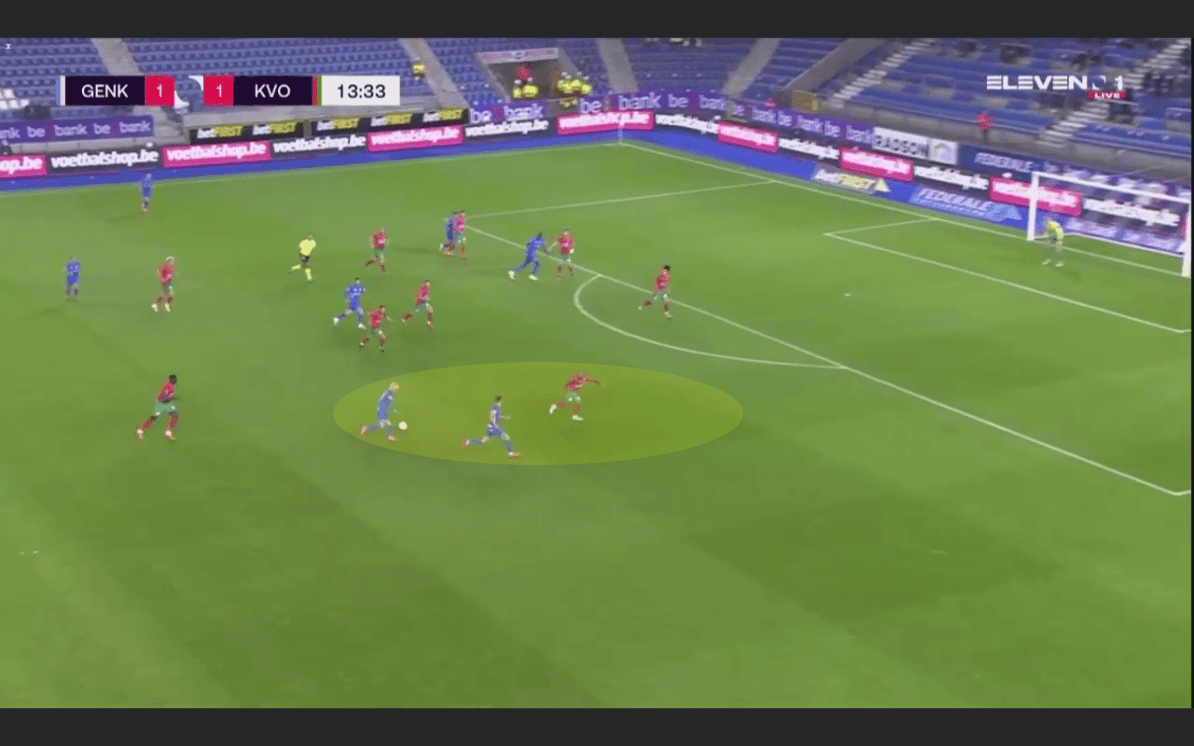
The image below shows the average positions of the Genk players and the combinations with more than 3 passes in one direction. The dot size corresponds to the number of touches. The image clarifies that the most passes were between the full-backs and the wingers. It confirms the obvious overload down the left-hand side Genk tried to create due to the isolation of the left-back. An effective tactic because the first goal came through an assist of Mæhle.
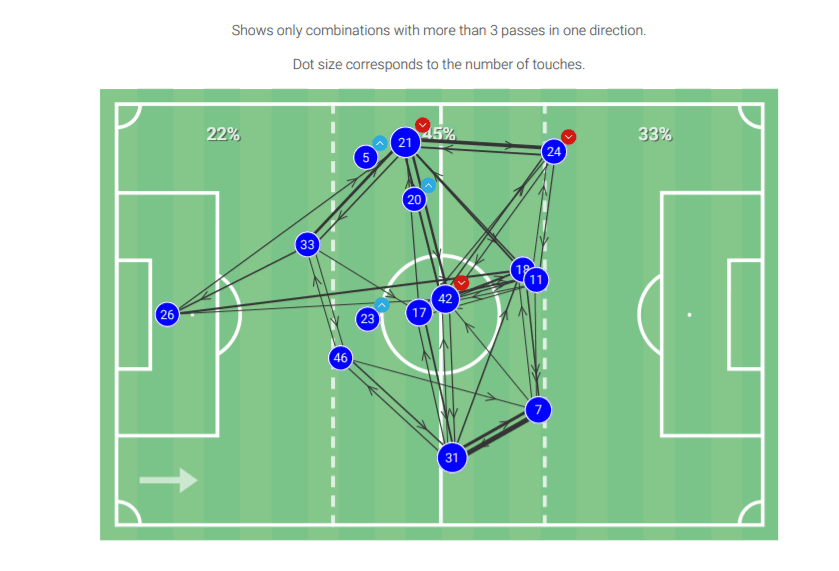
Oostende didn’t let Genk use this tactic during the whole game though. They tried to eliminate these tactics by shifting their low block heavily to the ball side. In the below image we can see eight Oostende players packed in order to win the ball back. Consequently, if Genk could switch play to the other side, space would occur for a player to run in. It would often be a full-back running into this space. Not ideal though, if a tricky winger could wait in this open space more danger would occur.
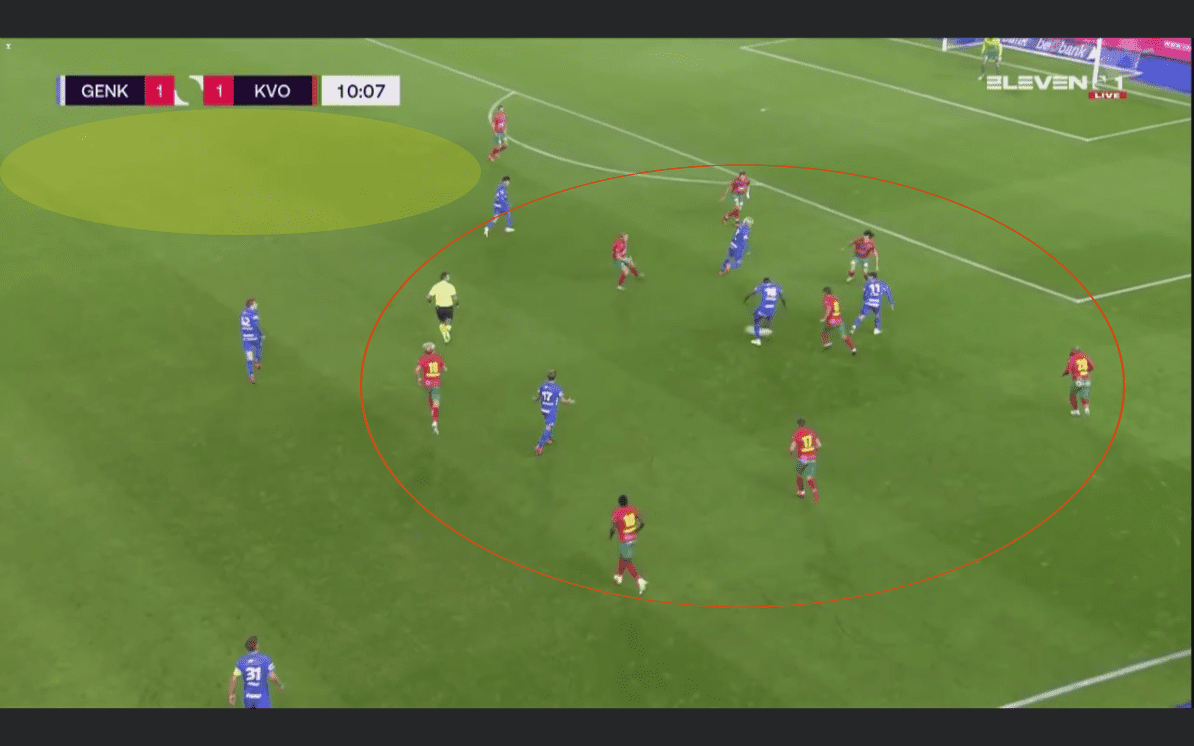
Oostende’s attacking shape
These days more and more coaches decide to attack in one formation and switch to another formation during the defensive phase. Blessin chooses both to attack and defend in a 4-3-1-2 system. This formation brings some interesting features to Oostende’s game.
One of the keys to this formation was the positioning of the two strikers. By placing the strikers in the gaps between the centre-backs and full-backs, Sakala and Gueye pinned all four defenders in the Genk backline. These positions of the strikers cause hesitation for the opposition when stepping out. Because if they do step out, it creates space behind the last line for Sakala and Gueye to run in. As a result, the players in advanced positions between the lines have more space to exploit and then can receive the ball without worrying about someone pressing from their blindside.
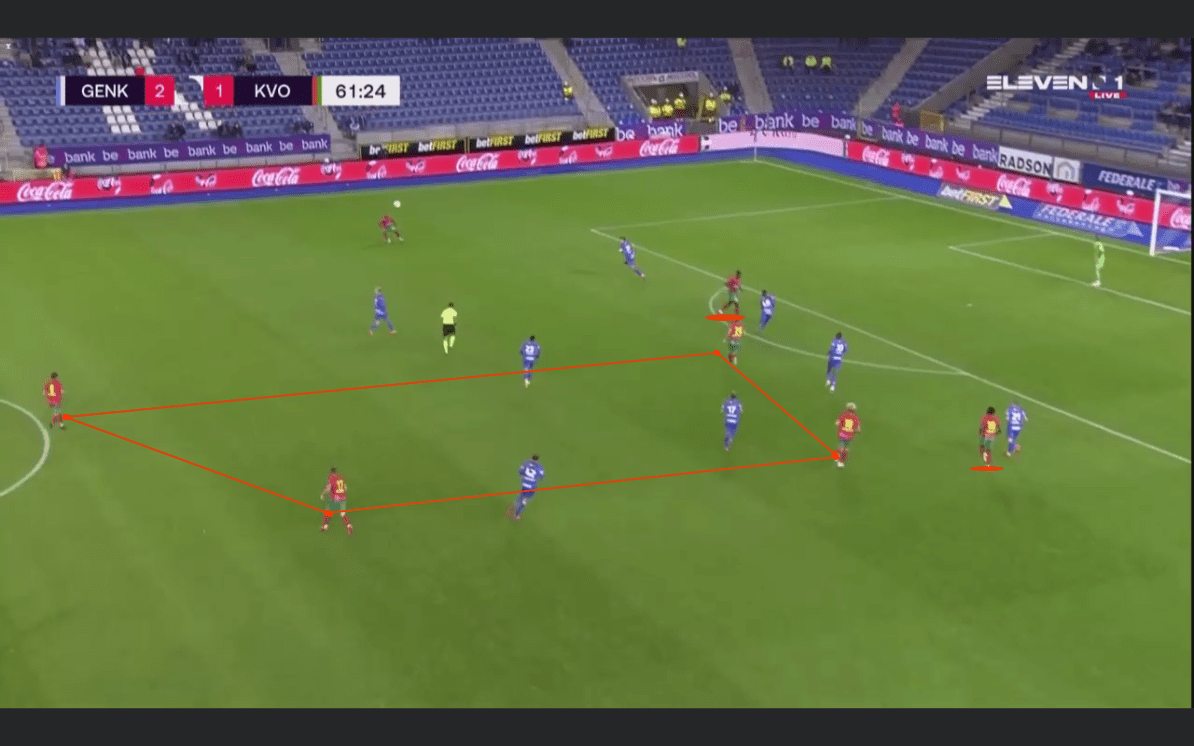
We can see how the positioning of the strikers gives the advantage in the below image. Whilst Genk’s full-backs often pushed up to create a 2v1 situation down the flanks, as we discussed above, Oostende would look to eliminate that by moving out wide a wide midfielder to create an equality and when they could win the ball back, the strikers moved to the outside of the centre-backs to run in behind or create space centrally for the other striker to run into.
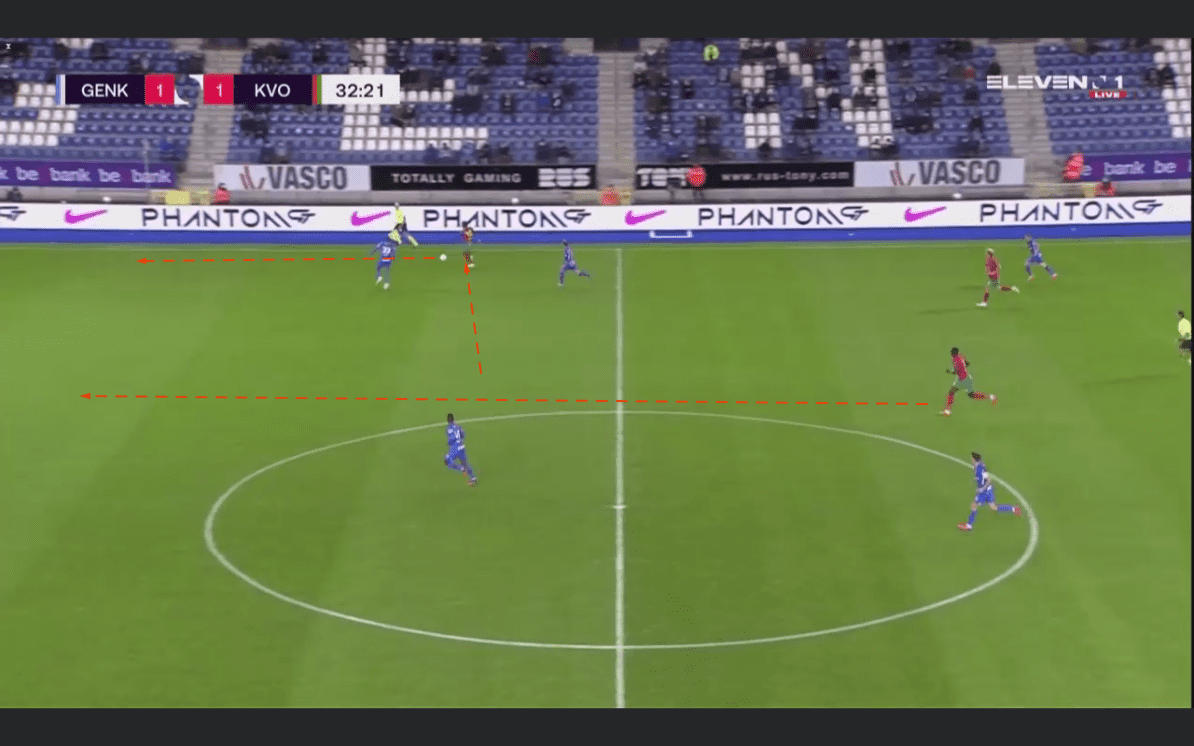
The width was provided by the two full-backs who pushed up. And of course, they create an overload in midfield against the three Genk midfielders, which through movement could open up vertical passes into the strikers. Below is a good example of a using the overload centrally to their advantage. McGeehan moves more centrally to attract his marker. This opens up a vertical pass from the centre-back to the striker.
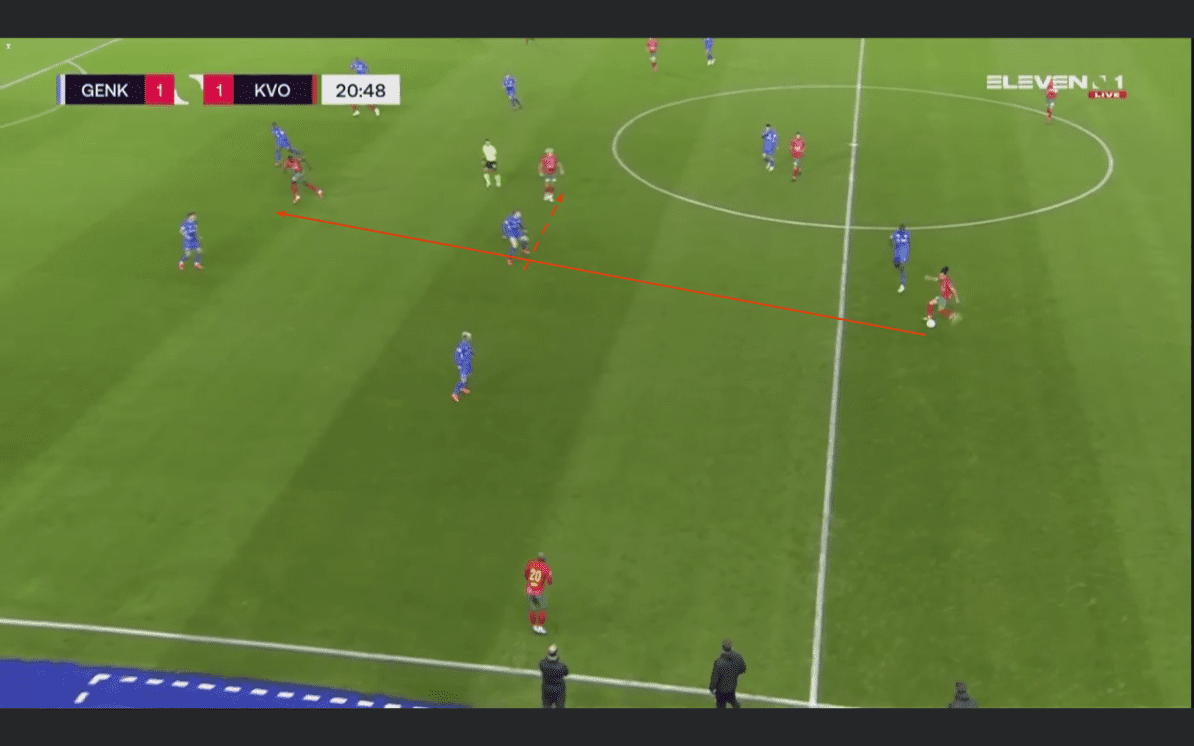
Conclusion
Jess Thorup has a very positive image in Belgium football. This is exactly why Genk decided to appoint him as head coach. After 45 minutes of football, Thorup’s men had 63 per cent of the ball. After Genk received a red card, Oostende came more into the game and got a draw out the game. Overall both teams have positives to take from the game and will look forward to next matchday.





Comments